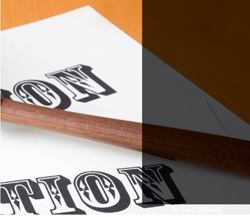Once the partnership is sealed, the auction company and developer must decide whether to have an absolute auction or a minimum-reserve auction. In an absolute auction, the unit goes to the highest bidder, no matter what the bid; in a minimum-reserve auction, the buyer has to meet or exceed a minimum bid.
In general, developers who aren’t under the gun prefer a minimum-reserve auction in order to retain control over the price they get. That makes setting the minimum bid price pivotal. Conventional wisdom would dictate that developers go with the highest minimum bid possible, but Gruendl says that shouldn’t be the case. He set his at 60 percent of the last asking price for a particular unit. During pre-sales, times were better, and the units were selling at $450 per square foot. During the auction, he got $370 per square foot, and afterward, he pushed it to $400 per square foot.
“You have to be aggressive on minimum bids so that you can drive velocity,” Gruendl says. “The incremental increases were less or flatter when we had a higher minimum bid. The gross results were higher with lower minimum bid.”
Some auction houses recommend setting the –price at a level that will attract investors. “If they can break even and can carry through as a rental, then they’ll hang on for five to eight years, they’ll accumulate wealth, they’ll sell them, and they’ll make a lot of money,” says Stephen Karbelk, vice president of premiere properties for Williams & Williams Worldwide Real Estate Auction, a large residential auction firm based in Tulsa, Okla.
Gumbiner disagrees. “We set minimums that were intended to attract those who wanted quality, affordable for-sale housing,” he says. “We wanted owner occupants.”
Finally, developers must determine the exact number of units that should go on the market. Gruendl put less than half of his units on the block. Gumbiner didn’t go all out either, putting only 23 of the units on the block; he sold 20 at 20 percent of his last asking price for them. At the EOS auction, units sold for $224 per square foot. Beforehand, they were going for $259 per square foot.
“The idea is try to balance the market between the buyer and seller by not offering too many units,” Karbelk says. “You get concerned about saturating the market.”
Regardless of whether you want to shed excess inventory or you’re looking for a life raft, condo auctions are only likely to grow in the next year or two. “I think its going to take a good couple of years to clear out inventory,” Stevens says.
And in markets such as Miami, McCabe says the worst is yet to come. So far, he has seen a limited number of conversions hit the auction block, but as more new developments reach completion over the next year, he expects the pace of auctions to increase significantly. Add that to the banks that will either force their developers to auction or just take over properties and auction them themselves, and it’s pretty obvious we’ll see more auctions over the next 12 to 24 months.
That may not be a bad thing, McCabe says. “You can make the point that the auctions serve a healthy purpose in that they may help in determining where the bottom lies in many markets,” he says. And, once people determine where the pit ends, only then can the recovery begin.
